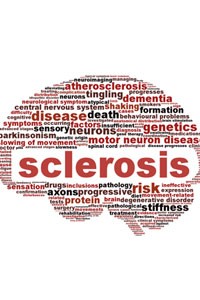Prevalence of Autism Spectrum Disorder
Autism Spectrum Disorder (ASD) has seen a notable increase in prevalence over the past decades. Recent data from the Centers for Disease Control and Prevention (CDC) indicate that approximately 1 in 36 children in the United States are diagnosed with ASD. This rise is attributed to enhanced awareness, improved diagnostic criteria, and broader definitions encompassing a range of developmental challenges. It is essential to recognize that ASD affects individuals across all racial, ethnic, and socioeconomic groups, with boys being nearly four times more likely to receive a diagnosis than girls. The increasing numbers underscore the importance of continued research and support for affected individuals and their families.
A Lifelong Journey with Autism
ASD is a lifelong condition; individuals do not outgrow it. Early signs often emerge in infancy, with some children displaying a preference for minimal physical contact, such as avoiding being held or cuddled. While there is no definitive medical test for diagnosing ASD, early detection through behavioral assessments is crucial. Early intervention can significantly improve outcomes, emphasizing the need for parents and caregivers to be vigilant and seek professional guidance if developmental concerns arise. Timely diagnosis and intervention programs can enhance communication, social skills, and adaptive behaviors, ultimately improving long-term quality of life.
Unraveling the Causes of Autism
The exact causes of ASD remain a complex puzzle. While no single cause has been identified, current research points to a combination of genetic and environmental factors. A recent study from NYU Langone Health found no convincing evidence linking maternal infections or health issues during pregnancy to autism, suggesting that genetics and environmental exposures play more significant roles. Additionally, factors such as parental age, genetic mutations, and prenatal exposure to certain chemicals have been associated with increased ASD risk. Ongoing research continues to explore these connections to better understand the etiology of autism and develop potential preventive strategies.
Behavioral Interventions: The Cornerstone of Treatment
Behavioral interventions remain the primary evidence-based treatment for individuals with ASD. Approaches like Applied Behavior Analysis (ABA) focus on teaching essential skills in a structured manner, tailored to each individual's unique learning style. Recognizing that individuals with autism may prefer visual, auditory, or experiential learning methods allows for more effective interventions. Early and consistent application of these therapies can lead to meaningful improvements in communication, social interactions, and daily functioning. Additionally, speech therapy, occupational therapy, and social skills training play a vital role in helping individuals with ASD navigate their environment and build independence.
The Role of Physical Activity in Enhancing Well-being
Engaging in regular physical activity offers numerous benefits for individuals with ASD. Improved fitness levels can positively impact self-esteem, happiness, socialization, independence, and cognitive development. Given that individuals with autism may experience muscular imbalances, strengthening postural muscles and enhancing overall fitness can reduce the risk of injury. Encouraging participation in physical activities, whether through structured programs or casual play, is vital for promoting health and well-being. Furthermore, research suggests that exercise may help regulate sensory processing issues and improve behavioral outcomes, making it a crucial component of holistic ASD management.
Encouraging Participation in Physical Activities
Motivating individuals with ASD to engage in physical activity can be challenging, especially if they have limited motor skills or lower levels of motivation. It is essential to provide ongoing encouragement and tailor activities to their interests and abilities. Introducing a variety of individual and partner activities can help identify enjoyable pursuits, fostering a positive association with exercise and promoting long-term participation. Additionally, incorporating physical activities into daily routines can create a sense of predictability, reducing anxiety and increasing engagement. Coaches and caregivers should use structured approaches and positive reinforcement to support skill development and participation.
Choosing Suitable Activities
Team sports may present challenges for some individuals with ASD due to the complexities of social interactions and coordination. Encouraging participation in structured activities that involve both gross and fine motor skills can be beneficial. Many individuals with autism find greater success in individual or dual activities, such as swimming, martial arts, or dance, which allow for personalized pacing and focus. These activities provide opportunities to build confidence, improve coordination, and develop discipline in a controlled and supportive environment. Additionally, alternative therapies such as horseback riding or aquatic therapy have been shown to enhance motor skills and emotional regulation.
Understanding Emotional Expressions
Individuals with autism may exhibit behaviors that appear antisocial, such as hitting, biting, or speaking loudly, especially when distressed. It is important to understand that these actions are typically not intended to harm or offend. Moreover, their emotional expressions may not always align with their internal feelings, making it crucial for caregivers and peers to approach such behaviors with empathy and seek to understand the underlying causes. Sensory sensitivities, communication difficulties, and emotional dysregulation can contribute to these expressions, necessitating supportive strategies that prioritize understanding and de-escalation.
Health Risks Associated with Autism
More than half of children with ASD are either overweight or have other health issues, increasing their risk for conditions like diabetes, cardiovascular disease, and depression. Sensory sensitivities can lead to challenges with diet, such as avoiding certain textures or flavors, potentially resulting in nutritional imbalances. Addressing these health risks requires a comprehensive approach, including regular medical check-ups, tailored nutritional plans, and appropriate physical activity. Encouraging balanced eating habits, incorporating movement into daily routines, and ensuring adequate sleep can contribute to overall well-being and improve long-term overall health outcomes.
Recognizing the Strengths of Individuals with Autism
While ASD presents challenges, it is essential to acknowledge and celebrate the unique strengths and abilities of individuals on the spectrum. Many possess exceptional talents, intense focus, and a passion for specific subjects, making them well-suited for various careers. Embracing a strengths-based perspective allows society to appreciate the valuable contributions individuals with autism can make across diverse fields. With proper support, individuals with ASD can thrive in areas such as technology, science, arts, and engineering, highlighting the importance of inclusive education and employment opportunities.
Understanding Autism Spectrum Disorder requires a multifaceted approach that encompasses awareness of its prevalence, recognition of its lifelong impact, exploration of its complex causes, and implementation of effective interventions. By staying informed about current research and embracing the strengths of individuals with autism, we can foster a more inclusive and supportive society that empowers everyone to reach their full potential. Continued research, advocacy, and early intervention remain critical components in enhancing the quality of life for individuals with ASD and their families.












